The Lake Ledro Pile Dwelling Museum, established in Trentino around the UNESCO Bronze Age pile-dwelling site, celebrates its first 50 years of history this year and is preparing to mark the event. The claim Ledro 50. Where prehistory is bluest recalls the ancient link between the pile-dwelling peoples and the lake basin that in 1929 handed back to the people of Ledro and the whole world a village suspended on more than 10,000 piles. To celebrate its half-century of life, the satellite branch of MUSE - Trento’s Museum of Science - has fielded a dense calendar of proposals that from July to September will enliven the shores of the lake to the sound of concerts, night tours and “paleolithic” activities.
The museum, a vibrant cultural hub capable of making even prehistory “pop,” of opening new networks of relationships inside and outside the territory and telling the story of daily life in the Bronze Age with ever new languages, has been completely renovated in 2019 by obtaining LEED® level “GOLD” eco-sustainability certification, the museum venue offers, among reconstructions and original remains of the pile-dwelling village (2.200-1350 B.C.), a journey through time to discover our prehistoric ancestors. For all information you can visit the website of the Lake Ledro Pile Dwelling Museum.
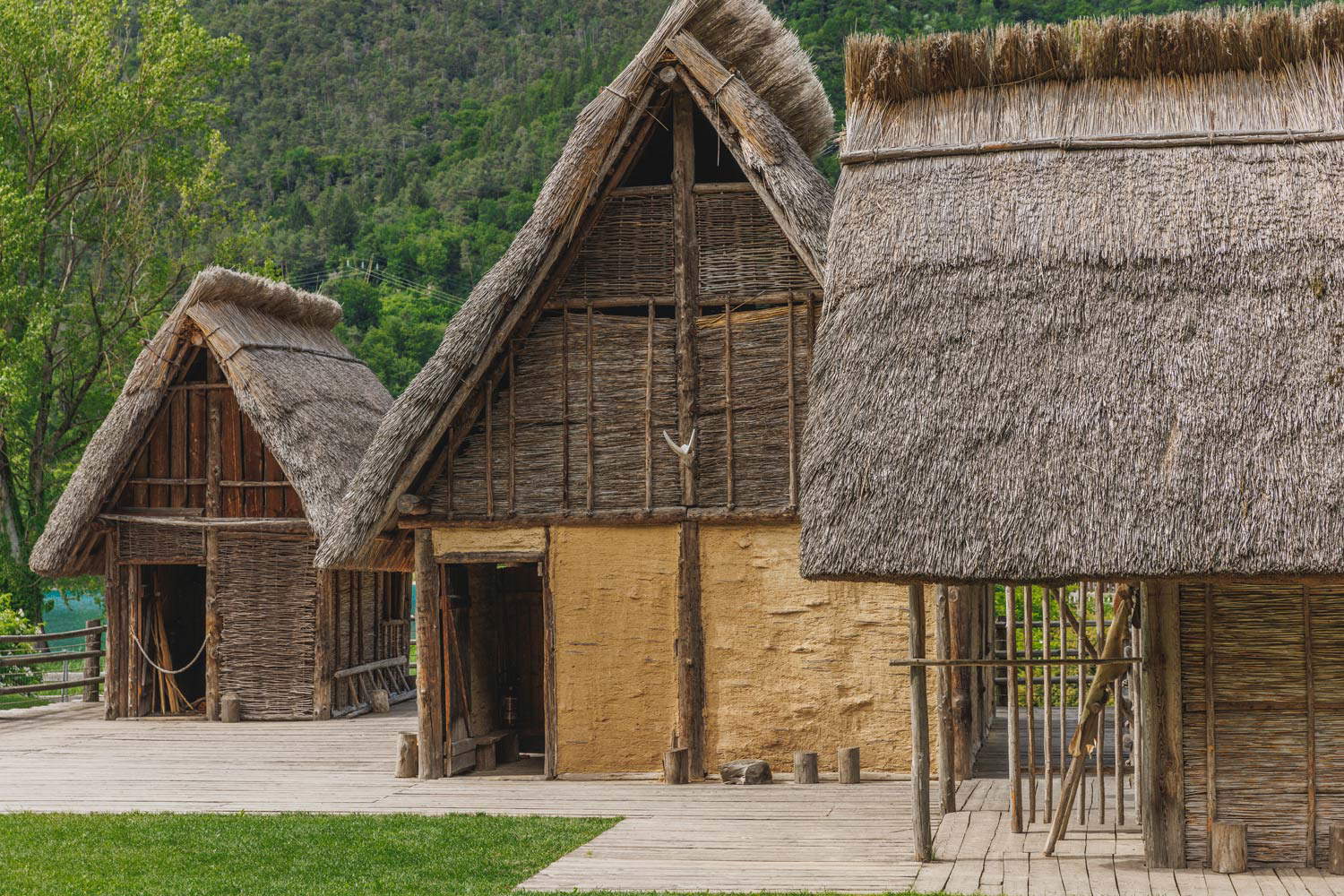
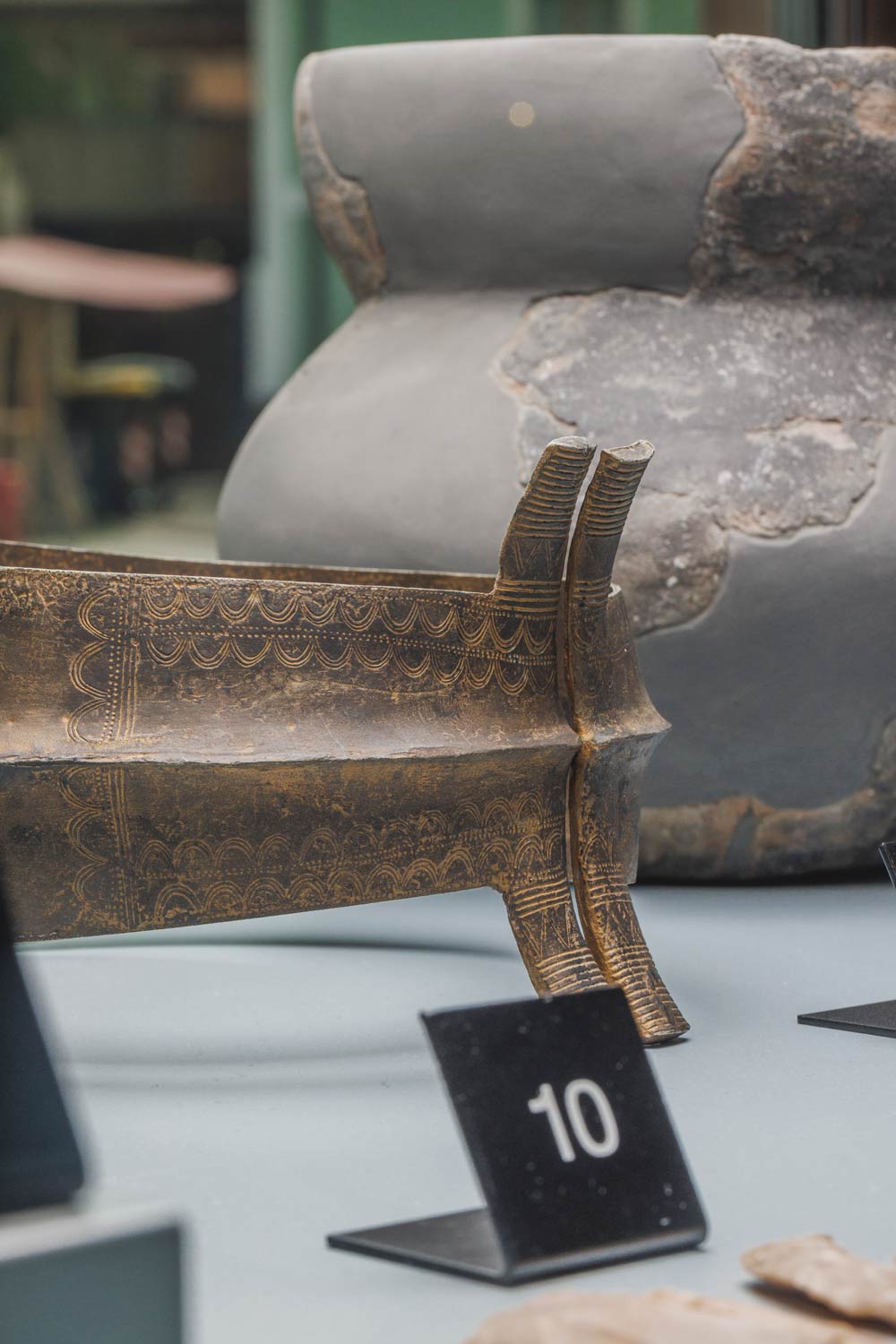
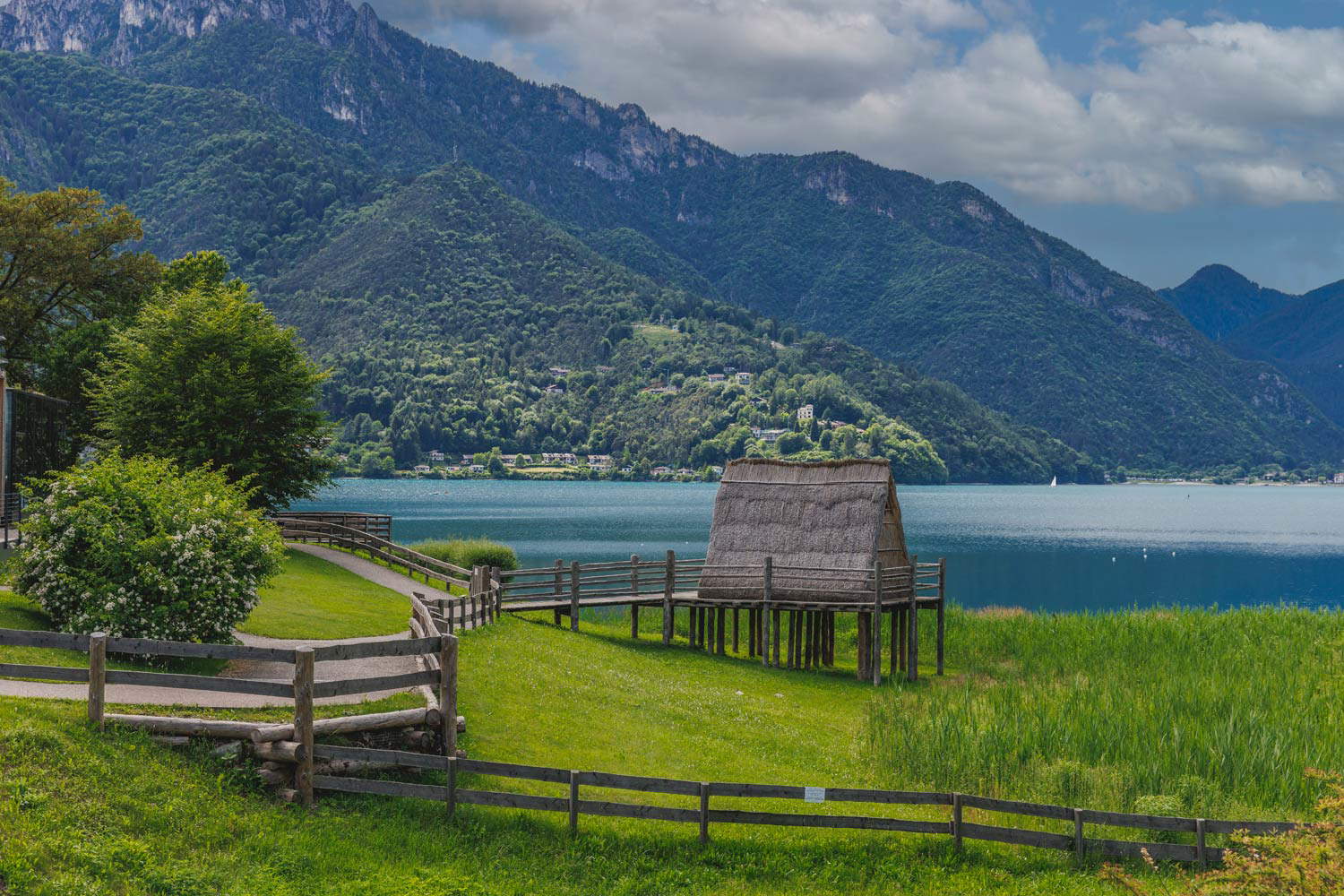
The Lake Ledro Pile Dwelling Museum was founded on September 24, 1972 as an antiquarium, that is, as a container and display of artifacts to protect the archaeological site discovered in 1929 when the lake level was lowered for the connection work of the Riva del Garda hydroelectric power plant. On the southern shore unexpectedly surfaced an expanse of more than ten thousand piles, evidence of one of the largest prehistoric stations discovered in Italy up to that time, as well as one of the most important - still today - in Europe. The discovery immediately had great resonance. The first excavation essay took place as early as 1929, while the most extensive excavation campaign was the one directed by Raffaello Battaglia in 1937, which explored an area of about 4,000 square meters2 and brought to light more than 12,000 piles and a great many finds. Subsequently, the site was subjected to subsequent research in order to reconstruct its stratigraphy, interpret the structure of the settlement, and recover other materials also for museographic purposes. The interest was so great that it caused the arrival of numerous visitors who began not only to frequent the archaeological area out of curiosity but also to have an opportunity to earn money: real “treasure hunts” were often held to collect souvenirs or to sell artifacts to tourists and enthusiasts. Even the establishment of a guard service did not put an end to this process of despoliation; therefore, thanks in part to the awareness of the municipal administration, from the mid-1950s they began to think about the construction of a museum building in front of the archaeological area. The objective was twofold: on the one hand, it was intended to safeguard the archaeological context and act as a deterrent to those who might want to wander into the area of the finds; on the other hand, to enhance the site and offer a cultural attraction.
Thanks in part to the interest of the Tridentine Museum of Natural Sciences, today’s MUSE, the final design was arrived at by Venetian architect Marcello Piovan. The work was done almost exclusively by local craftsmen and firms, while the layout was supervised by the then director of the Tridentine Museum of Natural Sciences, Gino Tomasi, and Prof. Bernardino Bagolini. The museum was opened on September 24, 1972, and after its opening the first janitor, Pietro Risatti, was hired, who stayed in a small apartment next to the museum until his retirement. The idea of building the museum in the open air adjacent to the archaeological site was supported and proposed from the beginning, an element that led Ledro to have, like few others, a privileged position among the Unesco pile-dwelling sites. Also strong was the desire to seamlessly consider the relationship between building, landscape, artifacts, and visitor: the building was presented as a large “showcase of showcases” that posed no visual barriers and related directly to its surroundings and the archaeological area. In parallel, the importance of the outdoor area was already understood so much so that a reconstruction of the archaeological area was considered, restoring the poles and creating a system of walkways. To this must be added the awareness, for which credit must be given to the then director of the Tridentine Museum of Natural Sciences, Gino Tomasi, that only by giving responsibility at the local level, by investing in a tangible sign that could be used by all, could we move from separateness to participation, thus recognizing the territories’ right to take care of and identify with their own cultural heritage.
The second phase is one in which the museum experiences more changes and the focus shifts more and more from the archaeological object to the visitor and the relationship with the territory. The activity that most represents this moment of transition is the first prehistoric snack. Fall 1995: Bezzecca middle school students enter the museum with a different approach, that of learning by doing, so as to acquire a new way of knowing and reliving the past. Thus began the first imitative archaeology activities for schools and tourists that placed Ledro both as a southern offshoot of a system of “open-air museums” in central Europe and as a pioneering model at the national level for the ways of approaching the world of didactics, educational entertainment, and hospitality. Ledro presents itself as a small museum, and this factor has actually been an opportunity: on the one hand, it has stimulated the search for new activities to enrich the visit, and on the other hand, it has allowed more direct contact with the public. It was so successful that the need soon arose for new staff and new spaces to improve the educational offerings and the reception of classes. In 2001 Ledrolab was inaugurated: the Municipality of Molina renovated and made available to the museum a long unused building, transforming it into a space to welcome schools. Then, in 2006, the birth of the reconstructed village marks a further turning point: excitement and surprise are increasingly foregrounded with activities based on storytelling and educational entertainment, such as the Village Festival and Living Prehistory.
Finally, in the 2018-2019 biennium, the museum is undergoing a major renovation that has changed and renovated both its interior and exterior spaces. The project, which is the result of at least a decade of “preparatory activities” made up of preliminary projects, focus groups, collection of visitors’ FAQs, and attention to the way visitors “use the museum,” responds to the need to align, from a structural point of view, with the vibrancy expressed in territorial activities, in the creation of networks of national and international mold, and in the deployment of cultural and economic strategies. The restoration of the building, the addition Of the new glass block (which expands the spaces to a total of 421 square meters) and the construction of a new outdoor pergola structure are the result of a necessary structural adjustment, providing new spaces dedicated to lectures, concerts, educational activities and temporary exhibitions, and thus creating a new environment not only for objects but also for people.
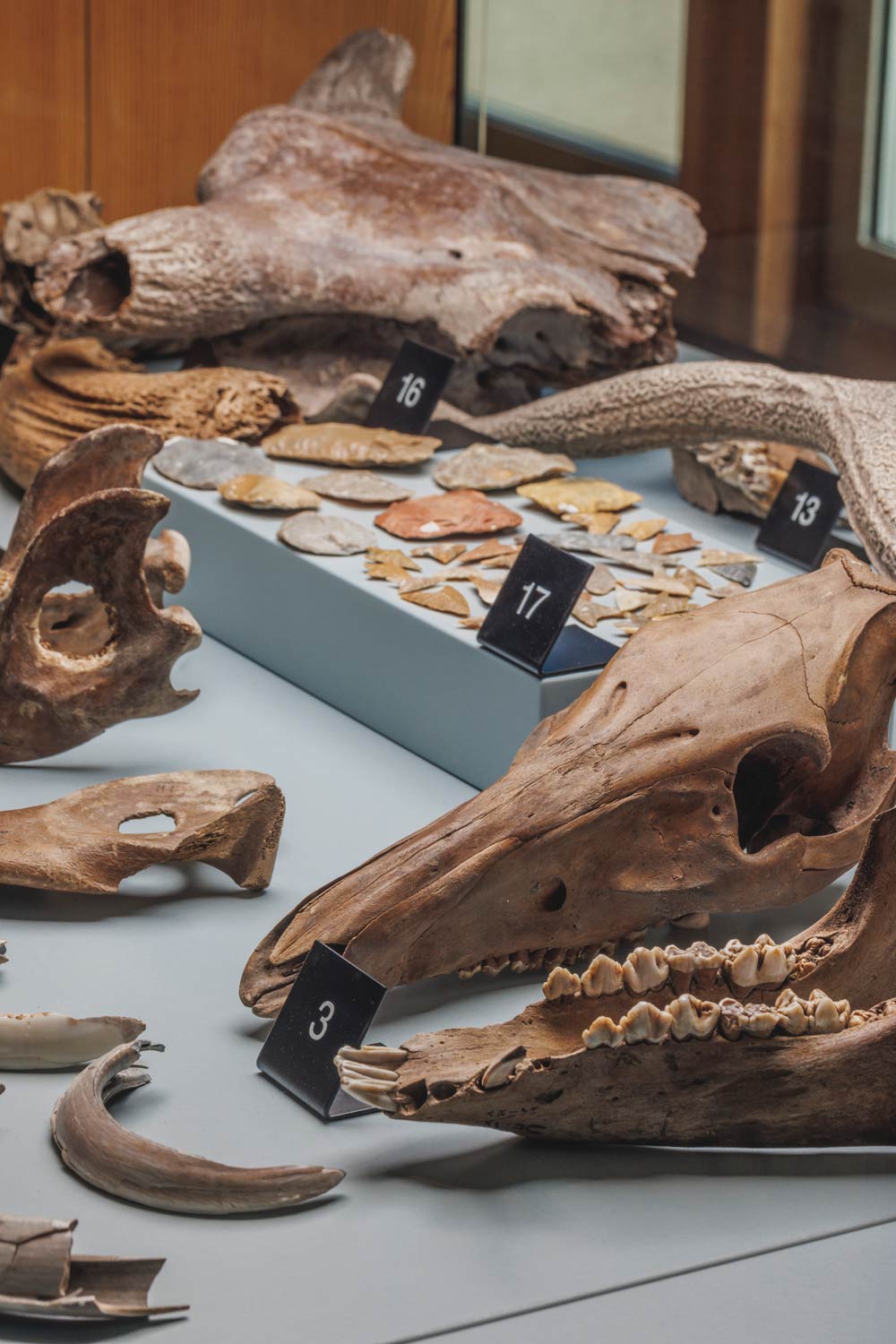
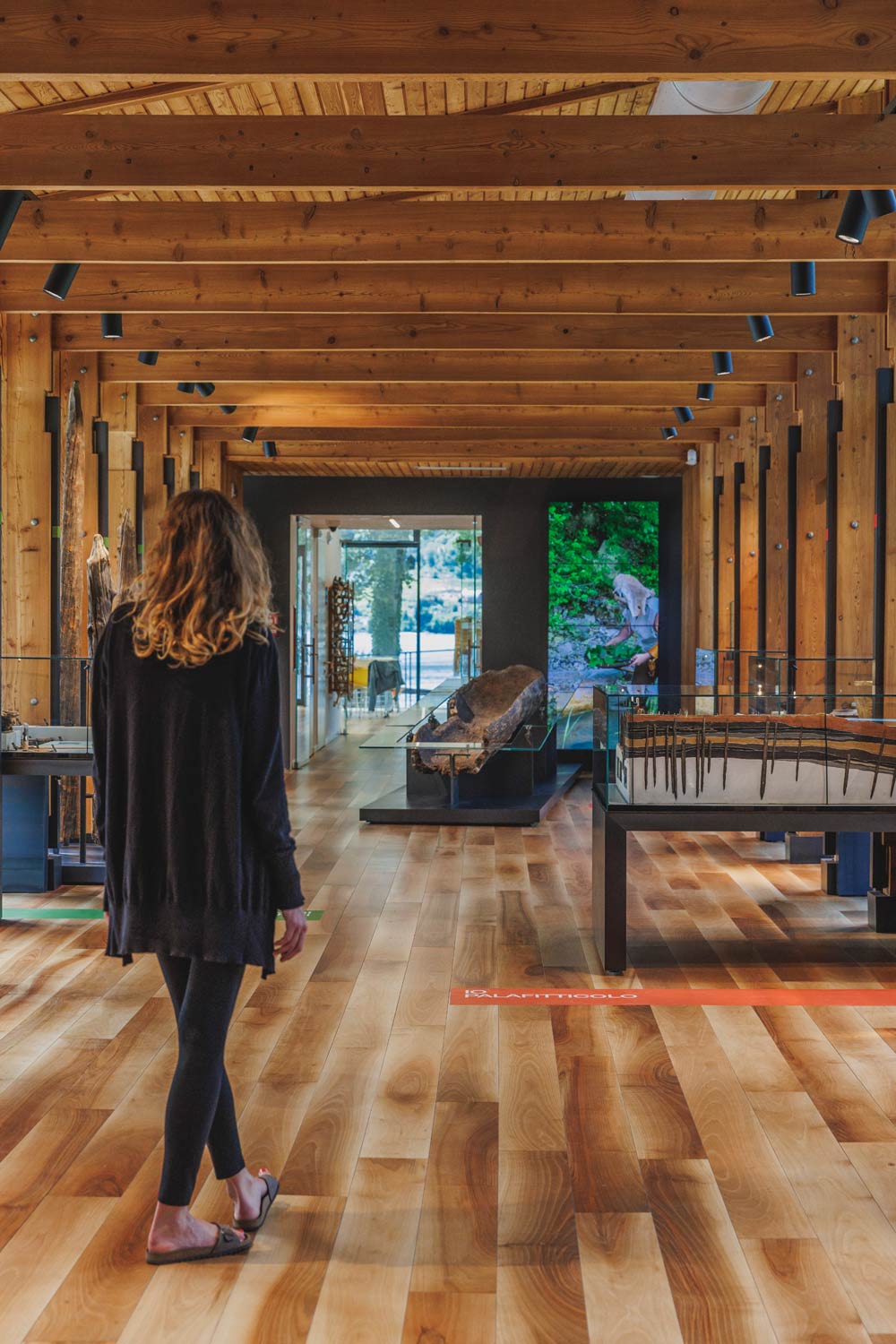
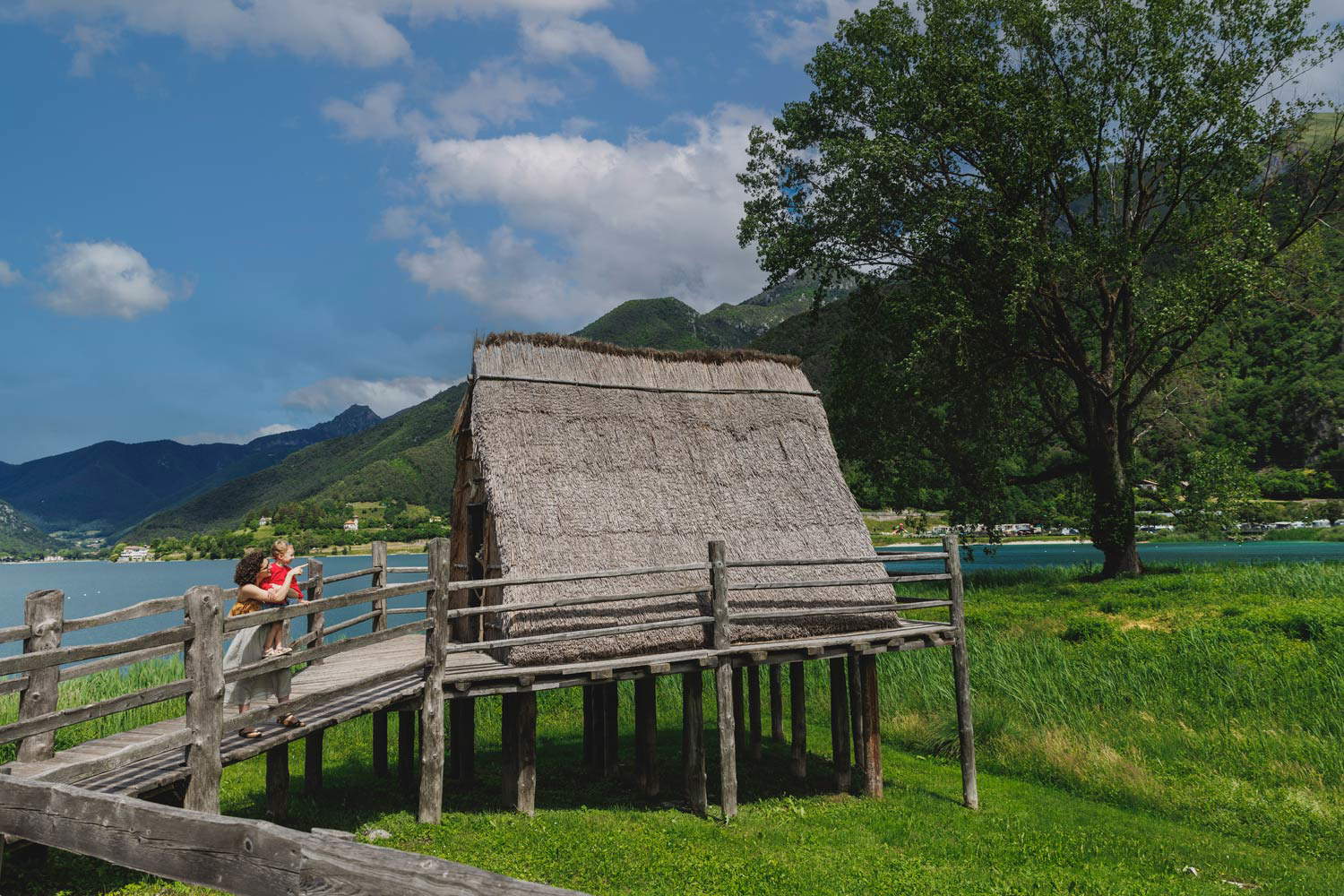
It begins with the summer festival Palafittando, now in its 26th edition: the schedule places at the center of the program-a rich carnet of proposals that counts more than 150 events-the celebrations for the 50th that will enliven the Ledro summer. Starting on Saturday, July 9, the shores of Lake Ledro - a small jewel of the Trentino lakes from which the original remains of the dwellings of Bronze Age men emerge - and the surrounding area, dotted with the sites of historical, archaeological and naturalistic interest that make up the Rete Museale Ledro (ReLED), will come alive with musical events, guided tours (in Italian and German), “biodiverse” workshops and in-depth historical and scientific discussions. The official opening of Palafittando 2022 is entrusted to the return of the Palafittiadi: after a two-year stop due to the pandemic, the Prehistoric Olympics, prehistoric challenges in archery, clay working and weaving, will return on Saturday, July 9, at 2 p.m. The August bank holiday will be the highlight of the 50th celebrations with a double event: on Sunday, Aug. 14 at 10 p.m., the Time Machine - Prehistory on Water event, a water-screen show and award ceremony for the Win a Night on a Pile! On Monday, August 15 at 2:30 p.m., there is a large prehistoric treasure hunt for families.
Still, Prehistory Square, the lively open-air area of the museum opened in 2020, offers a fun schedule of talks on Sunday afternoons in July and August featuring the voices of scientists, experts and artists. It starts Sunday, July 17, at 2:30 p.m. with themed activities and insights into 175 years of the Ponale road; at 9 p.m., space for music with “Fiat Lux,” a concert and video-art with Jemm MusicProject and Silvio Motta. Subsequent events include, on July 18, the “Age of Rock” with a concert at 9 p.m. by Radio Galena; on Aug. 7 workshops and live music from 2:30 p.m. and at 10 p.m. at the museum tour at night; on Aug. 21, after the museum activities, we move to the Arco Arboretum for “Sinfonia Verde” with the Vegetable Orchestra. On Sunday, Aug. 24, at 2:30 p.m., the grand finale with the duo “Dreams of the Adige.”
The museum is open daily: March-June: 9am-5pm; July-August: 10am-6pm; September: 9am-5pm. Full ticket: € 4.50 - Reduced: € 3.50 - Family ticket: € 4.50 / € 9 (1 or 2 parents with minors). Free for children under 14.
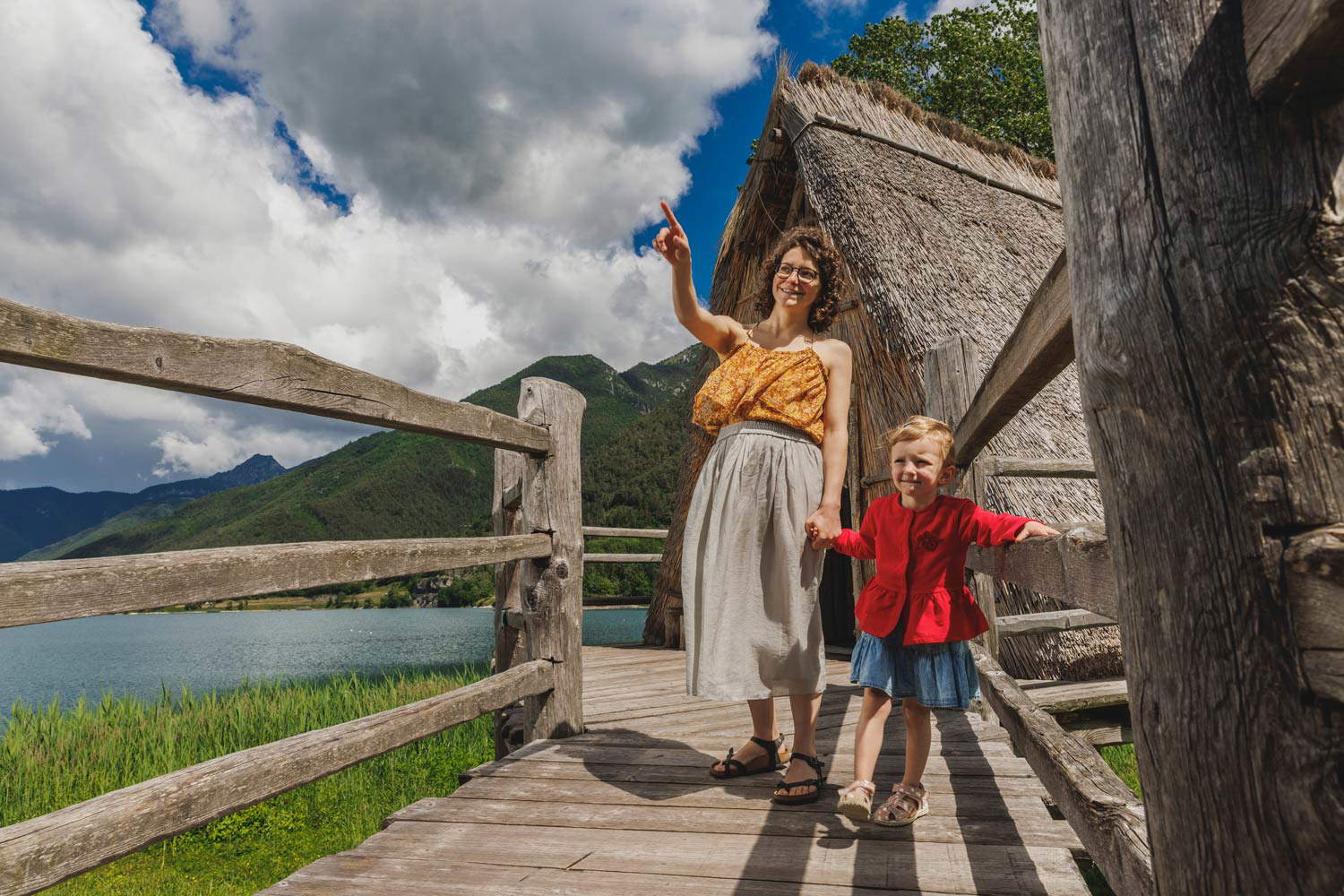
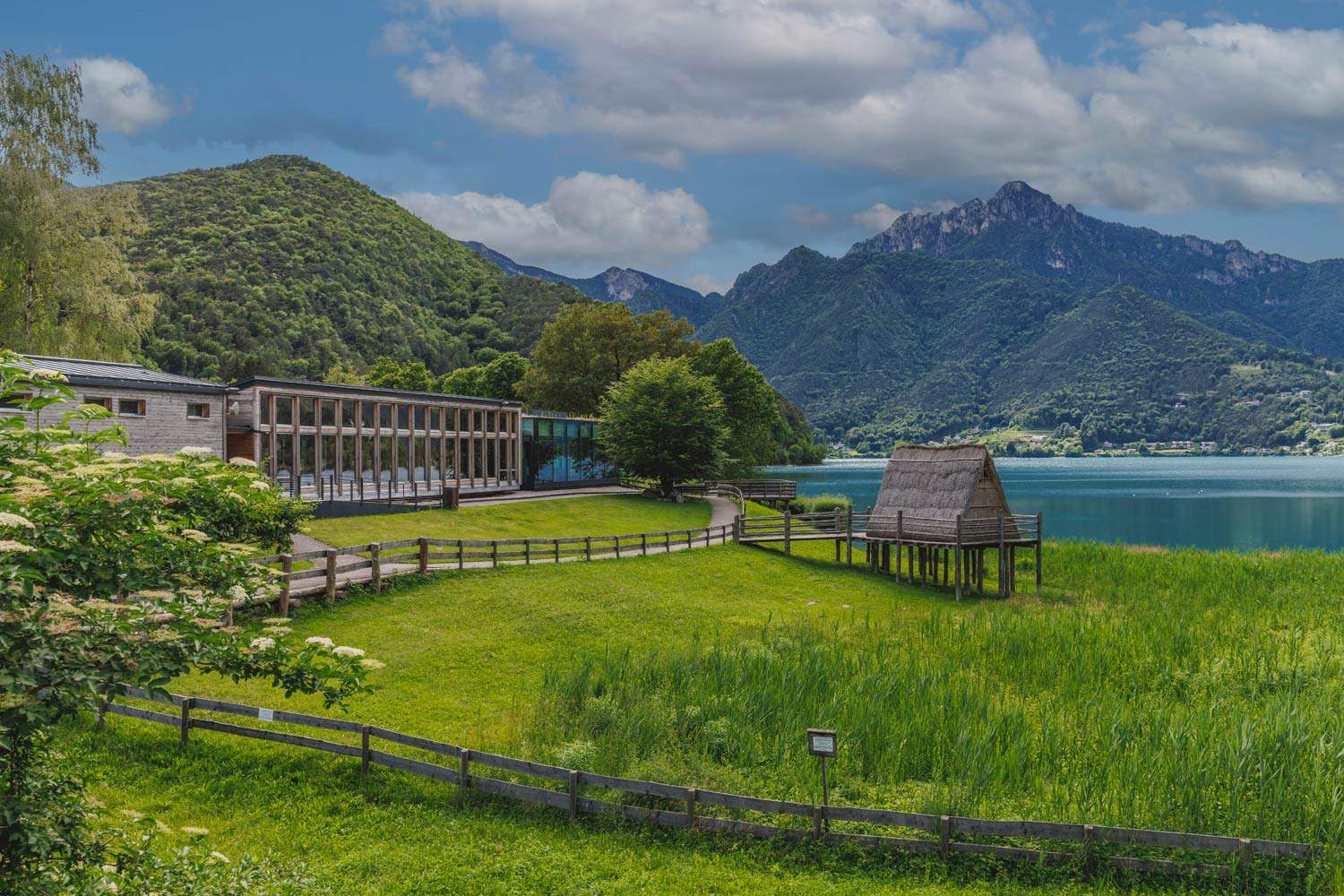
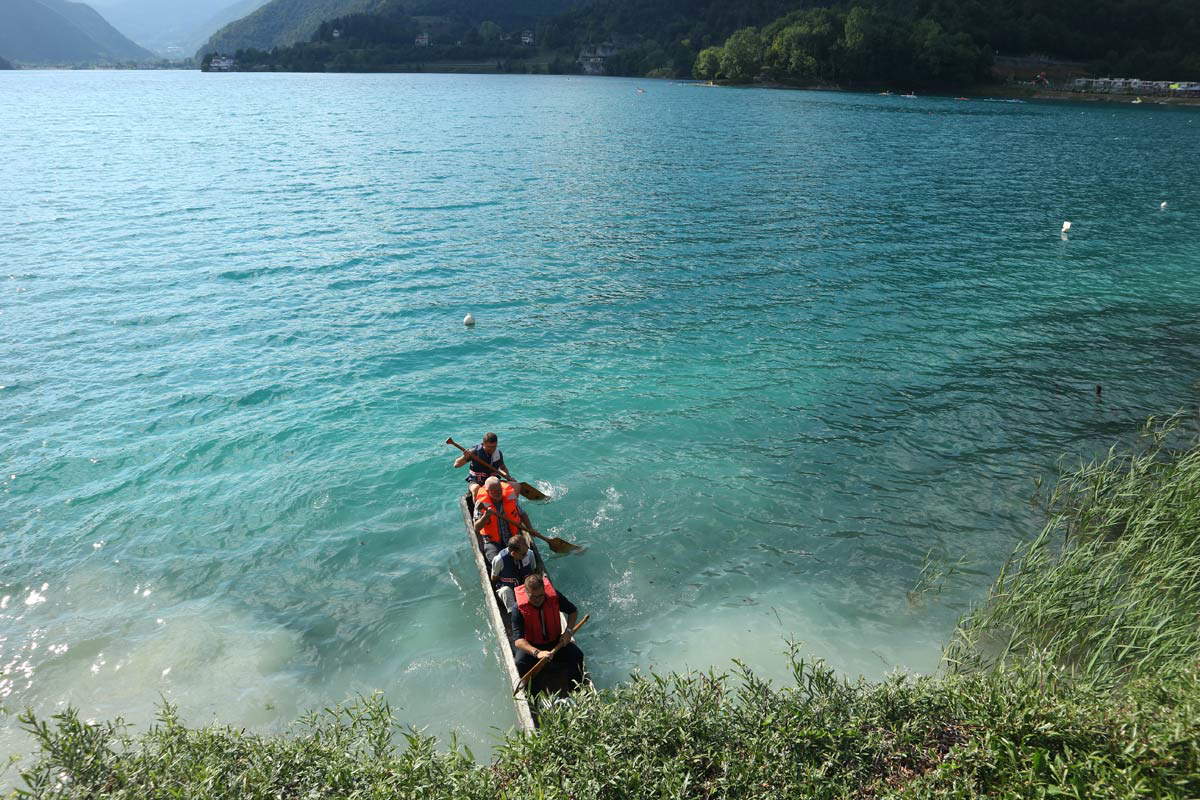
Not only exhibition activities and events. For the past decade or so, the Pile-Dwelling Museum has initiated a season of research capable of shedding new light on the prehistoric peopling of the Ledro Valley. In 2011 the high-altitude site of Pozza Lavino (Tremalzo - 1800 meters) was discovered, which backdates the first frequentation of the area to about 10,000 years ago; about ten new sites have since been discovered in the valley bottom. This does not mean that attention has been abandoned on the extraordinary materials found since 1929 in the pile-dwelling site: in fact, research conducted in the last five years has focused on some of them. There are currently four strands of research being studied by researchers from the Ledrense museum and colleagues working in the “mother house” of MUSE.
One of the latest projects is The Bread of Ledro: the museum, the University of Trento, the Bakers’ Association of the Province of Trento, and the Chamber of Commerce have come “to the table” to analyze a 4,000-year-old loaf of bread. Microscopic analysis will allow to understand the composition of this bread and to reproduce, with the School of White Art of Rovereto, the ancient recipe, to give new life to this food and create a food... ageless!
Still, at the moment, scholars at the MUSE in Trento are microscopically analyzing the traces (fingerprints) left on a ball of clay fired incidentally 4,000 years ago, to understand the sex and age of the author. By then analyzing the chemical composition of this fired clay, it will likely be possible to identify sources of supply. Then there is the Bears&humans project - A new tale of bears and humans in Trentino throughout Prehistory: in Ledro the corpus of faunal remains counts tens of thousands of finds; in recent years they have been rearranged and re-catalogued by MUSE researchers also to make up for the diaspora that has taken them over the years to various Italian museums and institutions. Recently, analysis has focused on brown bear remains. Unique finds such as skulls and pierced mandibles make it possible to trace the evolution of the relationship between mankind and Trentino bears, from an economic resource during ancient prehistory to a symbolic interlocutor in the agro-pastoral community of Ledrense 4,000 years ago. A special relationship seems to bind the community that occupied the shores of the lake to this animal.
Finally, with the project Genesis. From the Present to the Different Origins, the history of the Ledro Valley’s peopling is explored through the study of DNA. The project, currently underway, has the ultimate goal of reconstructing the genetic history of the Ledro Valley through two main phases of work: the collection of 100 DNA samples from present-day Ledro individuals (phase 1) will lead to the extraction of mitochondrial DNA to give rise to a genetic profile capable of defining the haplogroup to which each individual belongs and its genetic history (on the maternal line). The second phase of the study (to be completed in 2023) will target the Ledro anthropological collection, which awaits in-depth study to accurately assess the exact chronology and reconstruct the genetic profiles of at least one inhabitant of the 4,000-year-old pile-dwelling village.
“This important anniversary of the Lake Ledro Pile-Dwelling Museum,” emphasizes Stefano Zecchi, president of MUSE, “represents not only the great and virtuous museum network of Muse in the territory, but also the excellence of a historical and cultural testimony of universal value, a UNESCO World Heritage Site. Prestigious expression of a role of Museums, not only as spaces of preservation of history and civilization, but also of continuous narration and dialogue, in relation with contemporary users. The Ledro Museum is both a place of knowledge, memory and emotional, immersive, cognitive and educational experience. A ’living’ museum: a site of archaeological artifacts for a confrontation with our worldview, today, between past, present and future.”
“Celebrating 50 years of the Pile Dwelling Museum,” says Alberta Giovannini, Deputy Director and Head of Territorial Locations at MUSE, “is not only about retracing the stages of a journey to enhance the value of a World Heritage site, but it is also about telling the story of a museum that has continually sought synergy with the community in which it is embedded and for which it is a cultural center and tourist attraction. This virtuous relationship with the territory has developed over time a true network of cultural realities, ReLED, of which the Pile Dwelling Museum is the centerpiece. Programs that are rigorous in their content but lively in their methods have been able to attract not only students but also thousands of visitors from all over Italy and abroad, thanks to the work of enthusiastic staff who have been able with professionalism to bring the museum to be a place of meeting, communication but above all experience. As an institution, MUSE has sought to give the Pile Dwelling Museum the proper autonomy to implement a strategy of dialogue with the local community, while at the same time making available the scientific and communicative power of a relevant reality to enhance the intrinsic value of the site. In a place where the past is investigated, the desire to look to a future of continued growth continues to live on.”
“The Lake Ledro Pile Dwelling Museum,” explains Donato Riccadonna, head of the museum, “in its first fifty years has gone through various phases, changing dress several times but remaining essentially always itself. This protean life has underscored its extreme pliability and resilience, and one can rightly argue for an apparent paradox, namely the contemporaneity of a museum that tells the story of prehistory. Over time it has also become an organizational model for a museum network that is not a new institution, and this has the unbelievable in a world that is constantly churning out new institutions and rules dictated not by humans but by algorithms. And what about a world-looking research center located in a small mountain valley, where culture and economy are combined? Perhaps in the end the secret of our pride is all in this word: work.”
 |
| Ledro Lake Pile Dwelling Museum turns 50: many events to celebrate it |
Warning: the translation into English of the original Italian article was created using automatic tools. We undertake to review all articles, but we do not guarantee the total absence of inaccuracies in the translation due to the program. You can find the original by clicking on the ITA button. If you find any mistake,please contact us.